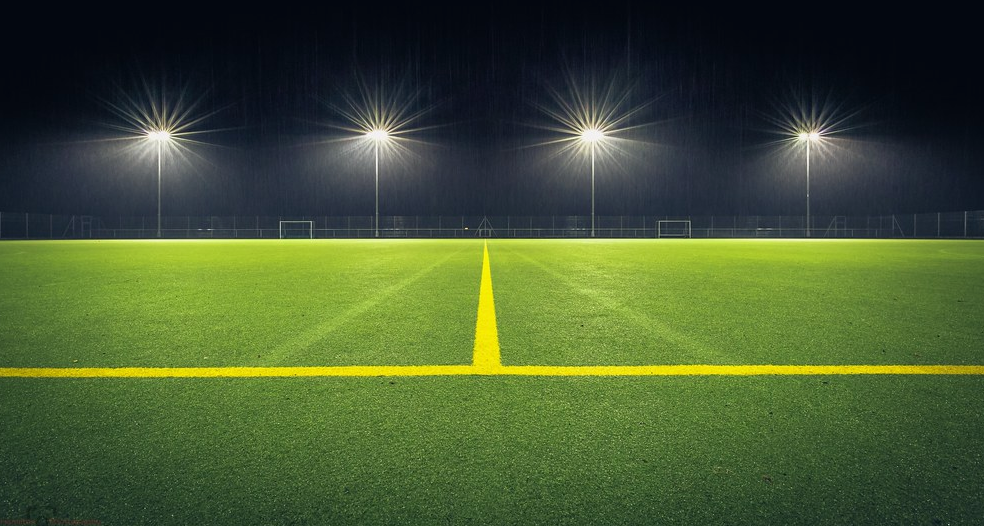Youth soccer field dimensions typically range from 25-35 yards wide and 50-80 yards long. These dimensions ensure a suitable playing area for young soccer players to develop their skills effectively. Soccer, being a popular sport among the youth, requires specific field dimensions to optimize player performance and safety. In Austin, Texas, United States, small-sided youth soccer field dimensions are carefully designed to meet the needs of budding athletes. Understanding the exact measurements of a youth soccer field is crucial for organizing matches, training sessions, and tournaments efficiently.
By adhering to standard dimensions, coaches and players can enhance their gameplay experience and foster skill development. Let’s delve deeper into the specifics of youth soccer field dimensions to uncover the key elements that contribute to an engaging and competitive playing environment.
Youth Soccer Field Dimension

Importance of Proper Soccer Field Dimensions
Proper soccer field dimensions are crucial for the development of young players and the fair play of the game. The size of the field directly impacts the players’ physical and technical abilities, as well as their understanding of space and positioning. Additionally, adhering to standard field dimensions ensures fair competition and equal opportunities for all players.
Enhances Player Development- Youth Soccer Field Dimension
The appropriate soccer field sizes by age are essential for the progressive development of young players. Youth soccer field dimension in meters varies according to age groups, with smaller fields for younger players and larger dimensions for older age groups. This variation allows players to adapt to different field sizes, improving their spatial awareness, decision-making, and overall skill development.
Ensures Fair Play- Youth Soccer Field Dimension
Standardizing soccer field size in meters ensures fair play, as all teams compete on an equal playing field. With consistent field dimensions, teams can focus on strategy, teamwork, and skill rather than being disadvantaged by varying field sizes. This promotes a level playing field and fair competition for all players, regardless of the location or venue of the match.
Standard Youth Soccer Field Dimensions
Youth soccer field dimensions are crucial for creating an environment that promotes player development and fair play. Understanding the standard dimensions of a youth soccer field ensures that players can enjoy the game to the fullest while learning essential skills. Let’s explore the key dimensions that make up a standard youth soccer field.
Length And Width
The standard length of a youth soccer field typically ranges from 65 to 100 yards, while the width ranges from 35 to 65 yards. These dimensions provide ample space for players to showcase their skills and tactical awareness while engaging in the game.
Goal Size
The goal size for a youth soccer field is usually 7 feet high and 21 feet wide. The appropriately sized goalposts allow young players to practice shooting accuracy and goalkeeping skills, contributing to their overall development in the sport.
Penalty Area Size
The penalty area, also known as the 18-yard box, is a vital area on the soccer field. In youth soccer, the penalty area typically spans 14 yards out from the goal line and 44 yards wide. This area serves as a crucial zone for defending and attacking strategies during matches.
Factors Influencing Field Dimension Choices
When determining the youth soccer field dimension in meters, several factors come into play. The age group, skill levels, and safety regulations significantly influence the size of the soccer field. Let’s delve into each of these factors to understand their impact on the field dimension choices.
Age Groups
The age group of the players is a crucial factor in determining the soccer field size in meters. Different age groups require different field dimensions to ensure a suitable playing environment. For instance, younger players may benefit from smaller field sizes to accommodate their physical capabilities and promote skill development. On the other hand, older age groups may need larger dimensions to challenge their increasing skill levels and physical abilities.
Skill Levels
The skill levels of the players also play a vital role in deciding the youth soccer field dimension measurements. Players with varying skill levels require fields of appropriate sizes to enhance their playing experience. A well-suited field dimension can contribute to skill progression, teamwork, and overall enjoyment of the game.
Safety Regulations
Adhering to safety regulations is paramount when determining the youth soccer field dimension in meters. Safety measures dictate the space required between the touchline and surrounding obstacles, such as fences or walls, to minimize the risk of injuries. Additionally, safety regulations influence the spacing between goals and the pitch’s overall dimensions to ensure a secure and controlled playing environment.
Impact of Field Dimensions on Gameplay
Field dimensions play a critical role in youth soccer games. The size of the field can have a significant impact on how the game is played, the speed of play, and the technical skills developed by players. Here we will discuss how different field dimensions affect gameplay.
Speed of Play
The size of the field can have a direct impact on the speed of play. A larger field can often lead to a slower pace of the game, while a smaller field can lead to a faster pace of play. On a smaller field, players have less time and space to make decisions and execute their plays. This can lead to quicker, more decisive actions and a faster pace of play. On a larger field, players have more time and space, which can lead to a slower pace and a more deliberate style of play.
Technical Skills Development
The dimensions of the field can also impact the technical skills developed by players. On a smaller field, players are forced to make quicker, more accurate passes and have better ball control skills. This is because they have less space to work with and need to be able to execute their plays quickly and efficiently. On a larger field, players have more space to move around, which can lead to a focus on endurance and speed rather than technical skills.
The size of the field is an essential factor to consider when playing youth soccer. Depending on the size of the field, the game’s pace, style, and technical skills developed by players can vary widely. Coaches and players should consider the field dimensions when developing their game strategy and training programs to ensure that they are optimizing their play and player development.

Adapting Field Dimensions For Different Age Groups
One of the most critical factors in youth soccer is getting the right soccer field size in feet. The dimensions of the field vary depending on the age of the players, and it is crucial to adapt the field size to suit the players’ abilities and needs. Here’s a breakdown of the youth soccer field dimensions in feet for different age groups, according to FIFA standards.
Mini Soccer (u5-u8)
For young players in the U5-U8 age group, the soccer field size in feet is much smaller than the standard field size. The recommended field size for mini soccer is between 25-35 yards wide and 35-45 yards long. The field should be marked with smaller goals and boundary lines, and the playing area should be reduced to suit the smaller players’ needs. This smaller field size ensures that players can develop their skills and technique while playing in a safe and appropriate environment.
Youth Soccer (u9-u12)
For players in the U9-U12 age group, the recommended field size is slightly larger than mini soccer. The field should be between 50-80 yards wide and 70-100 yards long, with larger goals and boundary lines. The slightly larger field size allows players to develop their tactical understanding and awareness while still ensuring that the playing area is appropriate for their age and ability.
Teenage Soccer (u13-u18)
For teenage players in the U13-U18 age group, the recommended soccer field size in feet is the standard FIFA soccer field dimensions. The field should be between 50-100 yards wide and 100-130 yards long, with full-size goals and boundary lines. This full-size field size allows players to develop their physical and technical abilities fully, preparing them for high school and college soccer and beyond.
It is essential to remember that these are just guidelines, and the field size can vary based on the players’ abilities and needs. It is crucial to adapt the field dimensions to suit the players’ age and ability, ensuring that they can develop their skills in a safe and appropriate environment.
Challenges Faced In Maintaining Proper Dimensions
When it comes to maintaining the proper dimensions of youth soccer fields, several challenges are encountered. It’s crucial to ensure that the field dimensions adhere to the standard guidelines to provide a fair and safe playing environment for young athletes. However, maintaining these dimensions comes with its own set of challenges, from cost considerations to space limitations. Let’s delve into these challenges and explore potential solutions.
Cost Considerations
One of the primary challenges in maintaining proper soccer field dimensions is the cost considerations. Ensuring that the field meets the required dimensions often involves expenses related to acquiring and maintaining the necessary equipment. From investing in quality field marking materials to regular maintenance and adjustments, the costs can add up quickly. Finding cost-effective solutions without compromising on the quality of the field dimensions is essential for sustainable maintenance.
Space Limitations
Space limitations pose another significant challenge in maintaining proper soccer field dimensions for youth. Securing a suitable area for the field that meets the recommended dimensions can be a daunting task, especially in urban areas where space is limited. Finding creative solutions to maximize the available space without compromising the field’s integrity is crucial. Implementing innovative field layouts and utilizing adjustable equipment can help overcome these space limitations effectively.
Innovations In Soccer Field Dimension Design
When it comes to the design of youth soccer fields, innovations have played a crucial role in enhancing the playing experience for young athletes. From modular field systems to adjustable field markings, these innovations have revolutionized the way soccer fields are constructed and used.
Modular Field Systems
One of the most significant innovations in soccer field dimension design is the introduction of modular field systems. These systems allow for the customization and flexibility of field dimensions, catering to the specific needs of youth soccer programs. With modular field systems, fields can be easily adjusted to accommodate different age groups and playing formats, providing a versatile solution for youth soccer organizations.
Adjustable Field Markings
Another notable advancement in soccer field dimension design is the implementation of adjustable field markings. These markings can be adapted to conform to various field sizes and configurations, enabling seamless transitions between different game formats. By having the ability to modify field markings, youth soccer programs can optimize their playing spaces for enhanced player development and overall gameplay experience.
Future Trends In Youth Soccer Field Dimensions
Discover the future trends in youth soccer field dimensions, shaping the gameplay for aspiring players. Evolving sizes cater to skill development, emphasizing strategic play on well-designed pitches. Stay ahead with innovations that enhance the youth soccer experience.
Focus on Player Development
As the sport of soccer continues to evolve, there is a growing emphasis on player development. In the future, youth soccer field dimensions are likely to be tailored to optimize player skill development and performance. The focus will be on creating fields that allow young players to enhance their technical abilities, decision-making, and spatial awareness. This will lead to a shift towards smaller, more compact playing areas that encourage quick thinking, close control, and improved passing accuracy.

Integration of Technology
The future of youth soccer field dimensions will also see the integration of technology to enhance training and match experiences. With advancements in augmented reality and GPS tracking, fields will be designed to accommodate these technological innovations. Coaches and players will be able to utilize real-time data and analysis to improve performance, leading to the development of smart fields that provide valuable insights into player movement, positioning, and tactical decision-making.
Frequently Asked Questions
What are the dimensions of the U10 soccer field?
The dimensions of a U10 soccer field are typically 55-65 yards long and 35-45 yards wide.
What are the dimensions of the Under 13 soccer field?
The dimensions of an under-13 soccer field typically range from 50-80 yards in length and 30-50 yards in width.
What are the dimensions of a 5v5 soccer field?
A 5v5 soccer field typically measures 25-35 yards in length and 15-25 yards in width.
What are the dimensions of the 11v11 soccer field?
The dimensions of an 11v11 soccer field are approximately 100-130 yards in length and 50-100 yards in width.
Conclusion
Understanding the proper dimensions of a youth soccer field is essential for optimal gameplay. By adhering to these guidelines, teams can enjoy fair and competitive matches. Remember, the right field size can impact player development and overall enjoyment of the sport. Keep these dimensions in mind for a successful soccer experience.

